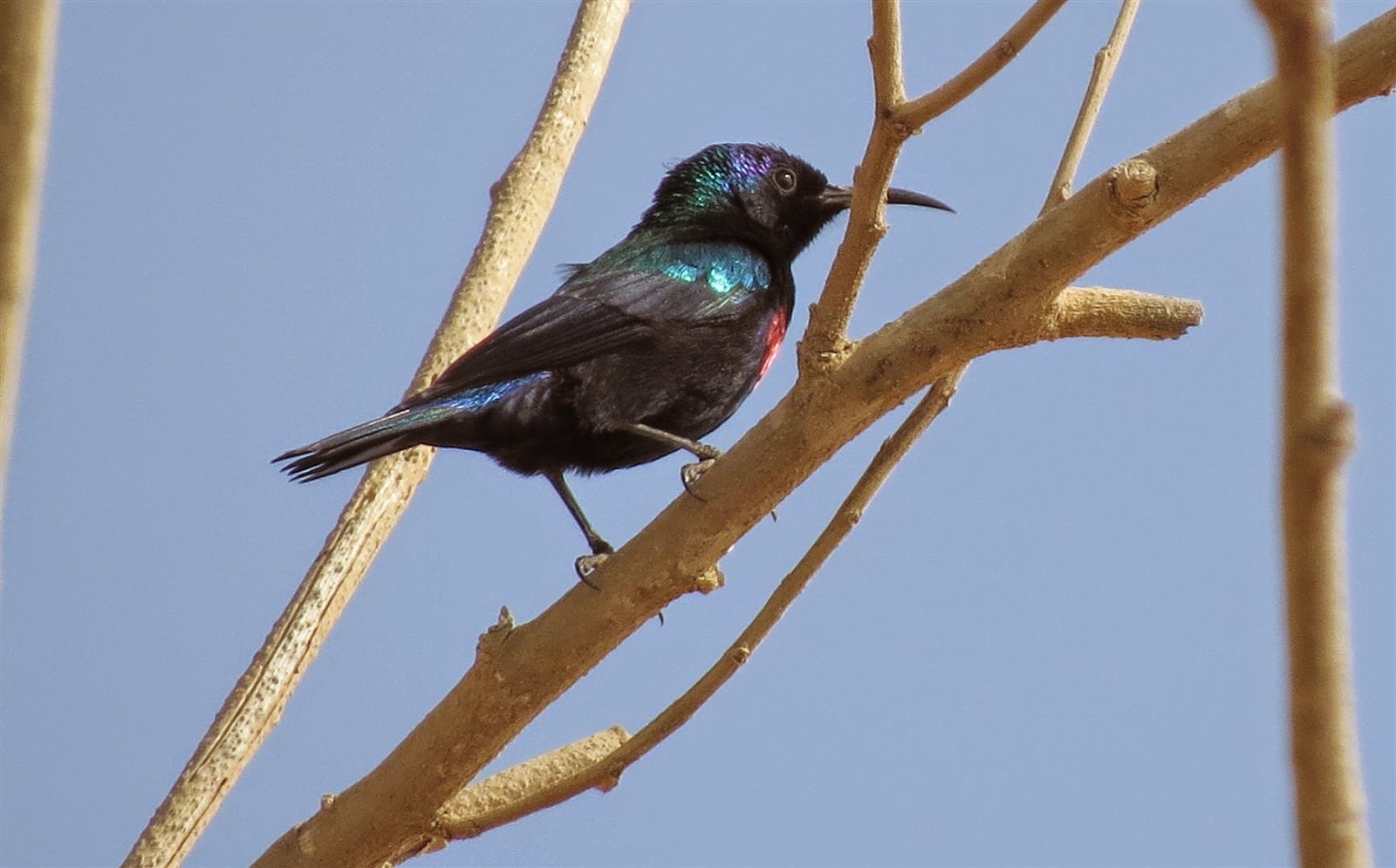Its getting quite hot now so birding really begins at about 4 pm. We went to Jarziz farm first.
Over our time there we saw four birds of prey. There was one each of pallid harrier, kestrel, greater spotted eagle and osprey.
pallid harrier by Michael Immel
Michael has better pictures of the pallid harrier and he has kindly allowed me to reproduce one here.
osprey
Even though its two kilometres to any major body of water, I have often seen an osprey at this site.
Richard's pipit 1
Towards the beginning of our walk round the huge (but only) pivot field we came across a Richard's pipit in a small isolated tree. The identification fooled me. I know that tawny pipit don't occupy trees. Yet the bird looked too pale for and poorly marked for a tree pipit.
Richard's pipit 2
Thanks to Andrew Bailey for pointing out the very long hind claw. It looks like Richard's pipit will go in trees!
In a near-by tree was a much more common yet very attractive male shining sunbird.
shining sunbird
All male shining sunbird are in breeding plumage at the moment.
Ruepell's weaver
little green bee-eater with Ruepell's weaver
The Ruepell's weaver flew into another bush right next to a little green bee-eater.
African silverbill
As we headed to the cluster of trees half way round the pivot field we came across a very large flock of African silverbill.
Namaqua dove
Also in the cluster of greenery were two Namaqua dove. This dove is uncommon but best found near or in the two city farms. Ayn Hamran is the only other place I have seen it in Oman.
Indian house crow
Unfortunately, The pesty Indian house crow and common myna are often found in this part of the farm too.
grey heron
Indian pond heron
As we headed further round the pivot field we noticed large numbers of singing bush lark and plenty more African silverbill in the field before stumbling upon some chestnut-bellied sandgrouse. This is another bird I have seen on every visit and unlike the two herons it is a resident species that I may well continue to always see. In other words this is the best spot I know to guarantee their sighting.
well-hidden chestnut-bellied sandgrouse
Though time was getting late, we made a quick dash over to Sahalnout farm before sunset.
rosy starling
There wasn't much time to observe deeply but we could hear and see large numbers of singing busk lark just as at Jarziz farm. However one obvious feature was the sheer number of rosy starling on site. They must be roosting there at the moment because group after group kept arriving from different directions. There were at least 250 in total.
Bonelli's eagle
Two of the last birds seen before the sun set were a Bonelli's eagle and a little green bee-eater. This young Bonelli's eagle has been around the farm for several months now. It is quite tame too.
little green bee-eater
I hope Michael enjoyed his birding. However for the weekend, I went out solo. Once a month I take a long trip away. This time I went further away and worked even harder than usual. I am very satisfied with the results which I will publish in the next series of blogs. There were additions to my Oman list, signs of heavy passage (finally) and a lifer. It was quite a weekend.

















No comments:
Post a Comment